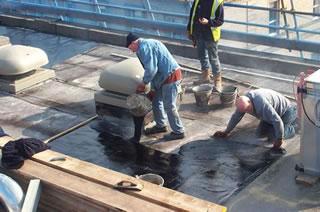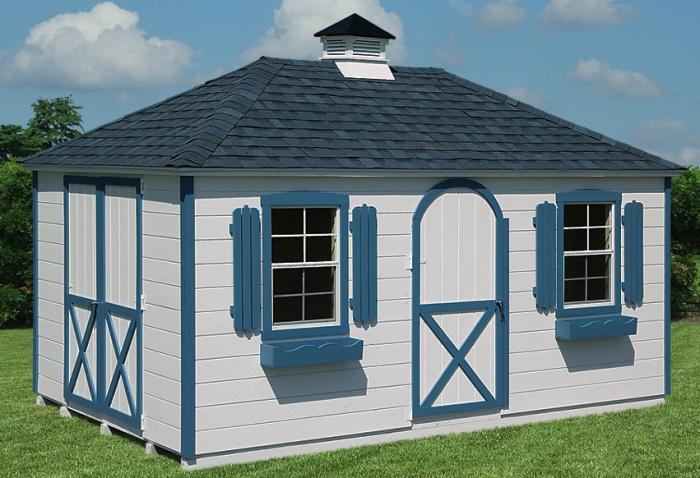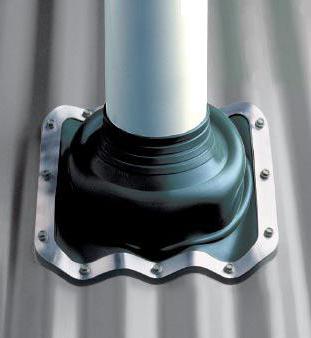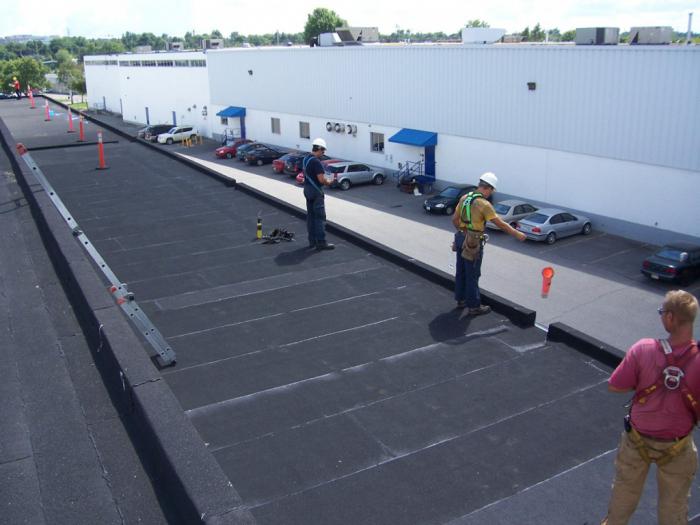Roofing mastic: types and applications
When building buildings, regardless of the typeroofing and roof structures, some types of work are standard. This is the execution of the rafter system, the installation of a crate, the laying of a "pie", which includes several layers, such as a heater, waterproofing and others. At the same time, it can be noted that for proper performance of works it is necessary to select the right materials. So, for insulation often used roofing mastic, which is available for sale in various types. Consider the application and the variety of this material.
Types of waterproofing material

Roofing mastic is an astringentsubstance from organic compounds with filler, which can be used as such substances as asbestos, mineral wool, slag, quartz, talc and others. These additives improve the technical characteristics of the material (increase strength, resistance to heat, reduce fragility in frost, etc.). In addition, antiseptics and herbicides are added to the mastic to prevent the appearance of fungal formations, lichens and other implants.
Depending on the type of organic matter, the following types of mastics are distinguished:
- bituminous;
- tarry;
- Combined (rubber-bituminous, bitumen-polymer and others);
- polyurethane.

Also, this material can be conditionally divided depending on the mode of use for such types:
- Mastic roofing hot - this type of binderraw materials are used in pre-heated form to perform fixing of ruberoid, roofing material and other coatings. In addition, they are used as a protective layer for roofing structures. Typically, this type of roofing waterproofing has the designations MBK-G - **, where in place * are the numbers denoting the heat resistance. Depending on the region of the terrain and the slope of the roof, a mastic with a certain heat resistance is used. For example, for northern latitudes for the design with a slope of less than 2.5%, the use of MBK-G-55 is recommended.
- Mastic cold - this raw material is used tosealing at processing places of abutment of sheets of a covering, at packing of a roll material for a roof and repair work. When using this type of mastic diluted with solvents (uyat-spirit), gasoline, solvent and others.
Application of the material for roof waterproofing

Terms and methods of using this material may be different, but it is possible to identify certain points common to all types of mastics:
- Cold roofing mastic can be applied with a spatula, and when using a brush or when applied in a spilled fashion, it needs to be diluted, while the allowable level is not more than 30% of the solvent.
- Liquid mastic should be applied on a flat, clean surface, on which it is necessary to first apply a primer layer of bituminous primer.
- When carrying out work, it is necessary to observecaution, since the substances that contain the roofing mastic are toxic. Therefore, in order to protect yourself from poisoning, it is recommended to wear protective goggles, a respirator (when applying hot mastic), gloves and special clothes.
- Mastic bituminous roofing is being prepared,as a rule, on special equipment at the plant. Self-preparation is also possible, but it is necessary to prepare a container around which a brick lining is installed. Also the lid of the tank should be tightly closed. The heating temperature is about 180 ° C, while the solution must be stirred constantly, excess impurities must be removed (a metal sieve or other similar device can be used for this purpose). Hot mastic should be prepared 2-3 hours before the work is done.
Roofing mastic provides a durablehermetic connection of coatings, and the waterproofing layer is made smooth, strong and durable enough. The use of this material prevents the formation of fungal formations and corrosion damage, which increases the quality of the work performed.






